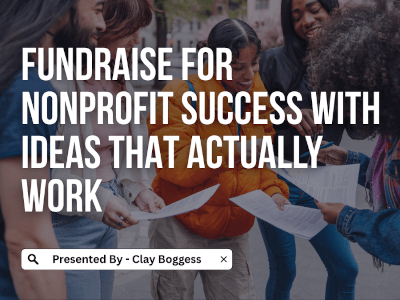
Blog Summary: School fundraising is more than just collecting donations—it’s an opportunity to bring together students, parents, teachers, and local businesses to create lasting memories and a sense of belonging. In this guide, we explore the importance of school fundraising events in building community, providing actionable strategies to organize inclusive, memorable events.
School fundraising is more than collecting donations or selling products to meet financial goals. It’s about bringing people together, fostering a sense of belonging, and creating memories that last a lifetime. In the USA, school events are a cornerstone of community-building, uniting students, parents, teachers, and residents in a shared purpose. At Big Fundraising Ideas, we believe successful fundraisers go beyond dollars and cents—they strengthen the bonds that make school communities thrive.
In this comprehensive guide, we’ll explore how school fundraising events can serve as powerful tools for community engagement. From planning inclusive events to leveraging creative fundraising ideas, we’ll provide actionable strategies to help you organize memorable school fundraisers that resonate with your audience. Whether you’re a PTO leader, a school administrator, or a passionate parent, this blog will inspire you to elevate your fundraising efforts while building a stronger, more connected community.
Why School Fundraising Events Matter
School fundraisers are often the heartbeat of a school’s culture. They provide essential funds for extracurricular activities, classroom supplies, technology upgrades, and facility improvements. However, their impact extends far beyond finances. Fundraising events create opportunities for collaboration, celebrate school spirit, and reinforce shared values.
The Role of Fundraising in Schools
Public schools often face budget constraints in the USA, making fundraisers critical for bridging financial gaps. According to the National Center for Education Statistics, over 90% of public schools rely on fundraising to supplement their budgets. These funds support everything from new playground equipment to arts programs and sports teams.
But fundraising isn’t just about meeting monetary goals. It’s a chance to involve the entire school community in a collective mission. Events like bake sales, carnivals, and walkathons unite people, fostering teamwork and pride.
Building Community Through Shared Experiences
Fundraising events are a catalyst for connection. They create moments where families laugh together at a school carnival, cheer during a fun run, or collaborate on a silent auction. These shared experiences build trust, encourage communication, and create a sense of unity.
For example, a well-organized school carnival fundraiser can draw hundreds of attendees, transforming the school grounds into a vibrant hub of activity. Games, food stalls, and live entertainment allow parents to meet, students to bond, and teachers to connect with families in a relaxed setting.
Planning a Community-Centric School Fundraiser
Organizing a successful fundraising event requires careful planning, creativity, and a focus on inclusivity. Below, we’ll walk you through the essential steps to ensure your school fundraiser not only raises funds but also strengthens community ties.
1. Define Your Goals
Before diving into logistics, clarify the purpose of your fundraiser. Are you raising money for a specific project, like a new library? Or is the goal to enhance school spirit while supporting multiple initiatives? Defining clear objectives will guide your planning and help you communicate the event’s importance to your audience.
For inspiration, check out our fundraising goal-setting guide to align your team and set achievable targets.
2. Choose an Inclusive Event Format
The best fundraisers appeal to a diverse audience, ensuring everyone feels welcome. Consider the demographics of your school community, including age groups, cultural backgrounds, and financial circumstances. Here are some inclusive event ideas:
- Fun Runs: A walkathon or fun run encourages participation from students, families, and even local businesses. Participants can collect pledges based on distance traveled, making it accessible for all fitness levels.
- Silent Auctions: Auctions allow families to contribute items or services, creating a sense of ownership. Include a range of bidding options to accommodate different budgets.
- Cultural Festivals: Celebrate the diversity of your school with a festival featuring food, music, and performances from various cultures. This format fosters inclusivity and showcases community talents.
- Read-a-Thons: Encourage literacy while raising funds. Students collect pledges based on the number of pages they read, making it an educational and engaging event.
3. Engage the Entire Community
A successful fundraiser involves everyone—students, parents, teachers, and local businesses. Here’s how to get each group involved:
- Students: Empower students to take ownership of the event. For example, older students can design posters or run game booths, while younger ones can participate in themed dress-up days.
- Parents: Invite parents to volunteer, donate items, or sponsor activities. Create a welcoming environment where they feel valued for their contributions, whether big or small.
- Teachers: Encourage teachers to integrate the fundraiser into classroom activities. For instance, a spelling bee fundraiser can double as a learning opportunity.
- Local Businesses: Partner with local shops or restaurants to sponsor your event or donate prizes, which not only boosts your fundraiser but also strengthens ties with the broader community.
4. Promote Your Event Effectively
Spread the word to maximize attendance and participation. Use a mix of traditional and digital marketing strategies:
- Flyers and Newsletters: Distribute flyers in backpacks and include event details in school newsletters.
- Social Media: Create a dedicated event page on platforms like Facebook or Instagram. Share behind-the-scenes updates, such as students preparing for a talent show fundraiser.
- Email Campaigns: Send personalized emails to parents and community members, highlighting the event’s purpose and impact.
- Community Boards: Post announcements at local libraries, coffee shops, and community centers.
For more tips, explore our fundraising promotion strategies to ensure your event reaches a wide audience.
5. Create a Memorable Experience
Focus on creating an atmosphere that leaves attendees feeling connected and inspired. Incorporate elements like:
- Entertainment: Hire a local band, host a student performance, or set up a photo booth.
- Food and Refreshments: Offer affordable options, such as a bake sale or food trucks, to keep attendees energized.
- Interactive Activities: Include games, raffles, or hands-on crafts to engage all age groups.
For example, a family movie night fundraiser can create a cozy, communal vibe with blankets, popcorn, and a beloved film projected on a school wall.
Creative Fundraising Ideas to Build Community
Looking for fresh ideas to make your school fundraiser stand out? Here are some innovative formats that combine fundraising with community-building, all tailored to engage school fundraising buyers in the USA.
1. Community Talent Show
A talent show is a fantastic way to showcase the unique skills of students, teachers, and parents. From singing and dancing to magic tricks and comedy, a talent show celebrates diversity and creativity. Charge a small admission fee and sell refreshments to boost fundraising.
Why It Works: Talent shows foster pride and camaraderie as the audience cheers for their peers. They also provide a platform for shy students to shine, building confidence and community support.
2. Seasonal Festivals
Host a themed festival tied to a holiday or season, such as a fall harvest fair or a winter wonderland event. Include activities like pumpkin decorating, face painting, or a hot cocoa station. Sell tickets or wristbands for activities to generate funds.
Why It Works: Seasonal events tap into the excitement of holidays, drawing families together for shared traditions. They also create opportunities for local vendors to participate, strengthening community ties.
3. Charity Build Challenge
Organize a “build challenge” where teams compete to create structures using materials like canned goods, LEGOs, or recycled items. Donate the materials (e.g., canned goods to a food bank) after the event. Charge an entry fee for teams or collect donations from spectators.
Why It Works: This event combines creativity, teamwork, and philanthropy, reinforcing the value of giving back. It’s a fun way to engage students while teaching them about community service.
4. Art Auction
Invite students to create artwork for a school-wide art auction. Parents and community members can bid on pieces, with proceeds supporting school programs. Display the artwork in a gallery-style setting to create a professional atmosphere.
Why It Works: An art auction celebrates student creativity and gives parents a meaningful keepsake. It also encourages collaboration between art teachers and fundraising committees.
5. Fitness Fundraiser
Host a fitness-focused fundraiser, such as a dance-a-thon, yoga day, or obstacle course. Participants collect pledges based on their activity levels, promoting health and teamwork.
Why It Works: Fitness fundraisers appeal to families who value wellness, creating a positive, energetic environment. They also encourage students to stay active while supporting their school.
For more creative ideas, browse our school fundraising ideas to find the perfect fit for your community.
Leveraging Technology for Modern Fundraisers
In today’s digital age, technology can amplify your fundraising efforts and make events more accessible. Here’s how to integrate tech into your school fundraiser:
Online Donation Platforms
Set up an online fundraising page to collect donations before, during, and after your event. Platforms like those recommended in our online fundraising guide allow supporters to contribute from anywhere, expanding your reach beyond the school community.
Virtual Event Components
Incorporate virtual elements to include families who can’t attend in person. For example, livestream a talent show or host a virtual raffle, ensuring everyone feels involved, regardless of location.
Social Media Challenges
Create a social media challenge tied to your fundraiser, such as a dance challenge or a photo contest. Encourage participants to share their posts with a branded hashtag, increasing visibility. For instance, a penny wars fundraiser could include a social media component where classes share updates on their progress.
Mobile Apps
Use fundraising apps to track pledges, send reminders, and share event updates. Apps can also gamify the experience, motivating students to reach fundraising milestones.
By blending technology with in-person activities, you create a hybrid fundraiser that maximizes participation and engagement.
Measuring Success Beyond Funds Raised
While financial outcomes are important, the true success of a community-centric fundraiser lies in its lasting impact. Here’s how to evaluate your event’s effectiveness:
1. Community Engagement
Did your event bring people together? Count the number of attendees, volunteers, and new connections formed. For example, a parent-child dance fundraiser might lead to new friendships among families.
2. Student Involvement
Assess how students contributed to the event. Did they take on leadership roles, like organizing a car wash fundraiser? Their participation reflects the event’s ability to inspire and empower.
3. Positive Feedback
Collect feedback through surveys or informal conversations. Ask parents, teachers, and students what they enjoyed and how the event could be improved. Positive testimonials are a sign of a strong community bond.
4. Long-Term Impact
Consider how the fundraiser strengthened the school’s culture. Did it spark new traditions, like an annual chili cook-off? Did it inspire ongoing volunteerism?
By focusing on these metrics, you’ll gain a holistic view of your fundraiser’s success and identify areas for growth.
Overcoming Common Fundraising Challenges
Even the best-planned fundraisers face hurdles. Here’s how to address common challenges while keeping community-building at the forefront:
1. Volunteer Burnout
Recruiting and retaining volunteers can be tough. To prevent burnout, delegate tasks clearly and offer flexible roles. Recognize volunteers publicly, perhaps during a school assembly fundraiser.
2. Low Participation
If attendance is a concern, focus on accessibility. Offer free or low-cost entry options and promote the event widely. A community potluck fundraiser can draw crowds with minimal cost to attendees.
3. Budget Constraints
Maximize your budget by seeking sponsorships and in-kind donations. Local businesses might provide supplies for a science fair fundraiser, reducing expenses.
4. Time Management
Balancing fundraising with school schedules is tricky. Plan well in advance and use tools like our fundraising timeline checklist to stay organized.
By proactively addressing these challenges, you’ll ensure your fundraiser runs smoothly and leaves a positive impression.
Building a Legacy of Connection
School fundraising events are more than a means to an end—they’re opportunities to weave the fabric of your community tighter. By prioritizing inclusivity, creativity, and engagement, you can create experiences that resonate with students, families, and neighbors alike. At Big Fundraising Ideas, we’re here to support you with resources, inspiration, and practical advice to make your next fundraiser a success.
Ready to start planning? Explore our complete fundraising guide for step-by-step tips, or dive into our fundraising ideas library for fresh concepts. Let’s work together to build not just funds, but a stronger, more vibrant school community.
Frequently Asked Questions (FAQs)
1. What are the best school fundraising events for building community?
Events like fun runs, talent shows, and school carnivals are excellent for community-building. They encourage participation from students, parents, and teachers, fostering collaboration and shared experiences. Choose events that align with your school’s culture and include inclusive activities to engage all attendees.
2. How can we involve parents in school fundraising events?
Engage parents by offering diverse volunteer roles like event planning, ticket sales, or running activity booths. Communicate the fundraiser’s purpose clearly through emails, newsletters, and parent meetings. To encourage participation, create a welcoming atmosphere with events like a family movie night or a potluck fundraiser.
3. How do we ensure our fundraiser is inclusive for all families?
Inclusivity starts with accessibility. Offer low-cost or free entry options, provide activities for all age groups, and consider cultural diversity in your event planning. Events like cultural festivals or read-a-thons are great for involving diverse families. Additionally, use multiple communication channels to reach all community members.
4. How can technology enhance our school fundraiser?
Technology can expand your fundraiser’s reach and engagement. Use online fundraising platforms for easy donations, live stream events for virtual participation, and promote through social media challenges. Mobile apps can track pledges and gamify the experience, as seen in events like Penny Wars.
5. What should we do if we have a limited budget for our fundraiser?
Maximize your budget by seeking local business sponsorships or in-kind donations, such as supplies for a bake sale or science fair. Choose low-cost events like a car wash or chili cook-off that rely on community contributions rather than upfront costs.
6. How can we measure the success of our fundraising event?
Success goes beyond funds raised. Evaluate community engagement by tracking attendance and volunteer participation. Assess student involvement, such as leadership in a spelling bee. Collect feedback through surveys to gauge attendee satisfaction. Look for new traditions or increased school spirit as indicators of impact.
7. How far in advance should we plan a school fundraiser?
Start planning at least 3–6 months to secure venues, sponsors, and volunteers. Use our fundraising timeline checklist to stay organized. Early planning ensures ample time for promotion and adjustments, especially for large events like a school carnival.
Author Bio
Clay Boggess has been designing fundraising programs for schools and various nonprofit organizations throughout the US since 1999. He's helped administrators, teachers, and outside support entities such as PTAs and PTOs raise millions of dollars. Clay is an owner and partner at Big Fundraising Ideas.



